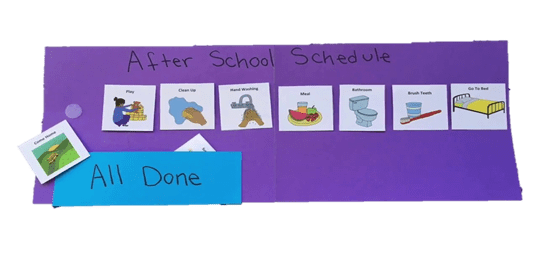 Have you ever witnessed a situation where a parent and child are at the candy aisle, the child starts crying and yells “I want candy, I want candy, you never buy me candy.” The parent yells “no, you are eating too much junk food lately.” The child cries louder and drops to the ground. Shoppers at the supermarket start to pass their judgmental looks. The parent gives up and yells “okay. stop crying, I will buy you the candy.” The child stops crying and receives candy.
Have you ever witnessed a situation where a parent and child are at the candy aisle, the child starts crying and yells “I want candy, I want candy, you never buy me candy.” The parent yells “no, you are eating too much junk food lately.” The child cries louder and drops to the ground. Shoppers at the supermarket start to pass their judgmental looks. The parent gives up and yells “okay. stop crying, I will buy you the candy.” The child stops crying and receives candy.
Maybe your child’s board-certified behavior analyst (BCBA) has suggested you do something similar to this: before going into the supermarket, then you can tell the child “ if you will not cry or yell the whole time when we are in there, I will buy you candy after we are done shopping” The child behaves. The parent praises the child for what a wonderful job they have done and buys the child candy.
As a parent or someone new to applied behavior analysis (ABA) you might think, I am constantly bribing my kid! There has to be a better way. As a parent or caregiver of chilren diagnosed with autism spectrum disorder (ASD), you might think positive reinforcement and bribery are the same because they both offer rewards to a child. It is important to know the difference between reinforcement and bribery because bribery tends to lead to more disruptive behaviors and reinforcement will help parents to see more desired behaviors.
Let us look at the definitions for reinforcement and bribery:
Reinforcement: The action of strengthening or encouraging a pattern of behavior typically by reward or encouragement.
Bribery: The offering, giving, receiving, or soliciting of any item of value to influence the actions.
Timing is what distinguishes reinforcement from bribery. For example, together a BCBA and parent plan out a reinforcement plan before disruptive behavior happens. Parents may state the rule to the child, “Remember if you [blank], you can earn [blank]. However, bribery is reactive and often you might resort to this when challenging behaviors occur at the moment and sometimes a situation feels out of control.
As you can see, bribery usually happens during behavior in order to get a behavior to stop at that moment. It seems to work in the situation. It is a short-term effect, and unavoidably, it will not decrease challenging behaviors. The above example illustrates, reinforcement should be planned, and reinforcer should be delivered following the desired behavior. Therefore, desire behaviors will occur more often in the future.
I hope after reading this, you have a better understanding of the difference between reinforcement and bribery. Timing is the key. Reinforcement is proactive and planned out by the caregivers while bribery tends to be reactive.
Next week, we will discuss the type of praise that will change behavior since they are not all created equal! Be sure to keep an eye out for the newest blog post next Friday! Please like us and share our posts on Facebook. You can also explore our blog for more ABA related information.
 As the spring semester is ending, let’s take a look at what we have discussed. First, we delved into the question of how autism spectrum disorder is diagnosed and what are some of the early signs of autism. A monitoring and screening tool was provided as a resource for parents as well.
As the spring semester is ending, let’s take a look at what we have discussed. First, we delved into the question of how autism spectrum disorder is diagnosed and what are some of the early signs of autism. A monitoring and screening tool was provided as a resource for parents as well.









